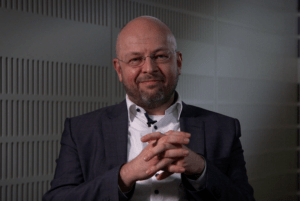
Peritoneal dialysis (PD) has a number of advantages over haemodialysis—yet with a few exceptions, it is underutilised in most countries. So went the argument of transplant surgeon Frank Dor (Hammersmith Hospital, London, UK) when he spoke as part of the first ever renal interventions session at Charing Cross (CX) Symposium (25—27 April, London, UK), which followed on an earlier session on vascular access.
Dor staked out a claim that pre-emptive living donor kidney transplantation was the “most ideal” therapy for kidney disease patients, and set out that kidney transplantation is generally preferred over dialysis for a variety of reasons. However, he said that each of these therapies had their own roles to play—often in the course of treatment of the same patient—and he emphasised that “many patients have contraindications for transplantation”. Some experience transplant failure when there is not another donor immediately available. Those receiving treatment for chronic kidney disease (CKD) “can use many modalities during their career as a kidney patient”, he said.
“In terms of access for dialysis, there are not technically many contraindications,” Dor stated. “However, if you ask people their preferences—when they are given unbiased pre-dialysis education—about 50% opt for PD.” For this claim, he referenced a number of studies including Johanna C Korevaar (University of Amsterdam, Amsterdam, The Netherlands) et al’s from 2003. Nevertheless, only one region is listed as performing PD over 50% of the time—Hong Kong.
For a number of “complex” reasons, however, PD remains “underutilised”, he argued, citing a list of patient-reported factors that lead them to favour the modality. Chief among them is the improved freedom and autonomy it provides, allowing them to more easily work and travel. It also relieves them of the need to visit a dialysis centre to receive treatment, allowing them to perform it at home—something hit upon again in the question and answer section after the presentation, where Dor said that PD and home haemodialysis both offered this advantage and were “complementary” rather than in competition, catering as they do to differing suitability in different patients.
PD also offers greater dietary freedom, with fewer fluid restrictions, as well as the “avoidance of painful needle sticks”. Those concerned about the appearance of an angioaccess site on their arm may also prefer it. From a clinical perspective, Dor makes the case that it presents an option that is cheaper with lower mortality rates, better cognitive function for patients, and preservation of urinary output for longer, while also better suiting elderly or frail patients, as well as transplant recipients.
Why, Dor asked, is PD nevertheless underutilised? He suggested in answer that “nephrology and surgical trainees are not properly trained” on the therapy, nor are patients properly informed. Adding that “haemodialysis facilities need to stay open,” he said there was therefore “a financial incentive for haemodialysis.” PD also presents several technical issues, with a “relatively high mechanical complication rate” and a 20% failure rate of PD catheter insertion—though these issues, he put forward, may be related to the shortage of proper training.
As part of the International Society of Peritoneal Dialysis (ISPD), Dor explained that the society’s guideline advises the use of advanced laparoscopic PD catheter insertion as a solution. This, he said, could improve PD catheter insertion through “thorough assessment of the peritoneal cavity”, as well as a maximisation of surgical working space, among other advantages. Speaking to this newspaper, he said: “For the advanced laparoscopic technique, it is equally important that adjunctive procedures that would enable better PD catheter survival can be done during the insertion operation, which cannot be done using different techniques.”
He noted that the yearly course he chairs on behalf of the ISPD in Vienna, “ISPD PD University for Surgeons—Europe”, was helping to contribute to improved provision of PD access.












